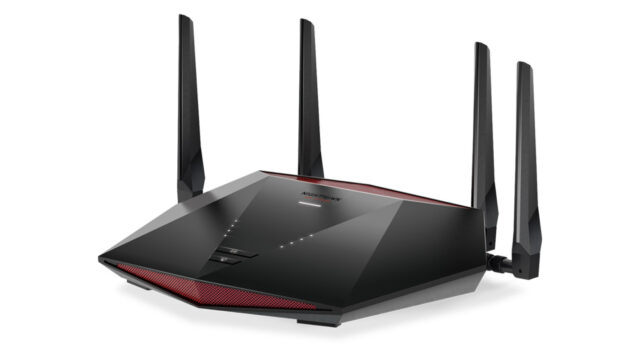Having a wired or wireless setup for your home internet connection, online gaming, and any other activities that required a network connection were your only two options. WiFi, on the other hand, is the clear winner at this point and should be your top priority.
Or is it? Is it safe to say that Ethernet will never be used again? Or, in today’s world of cutting-edge technology, is there still a place for a good old-fashioned cable connection? Let’s take a look.

Major differences between WiFi and Ethernet
The decision between utilizing WiFi or Ethernet was one that was relatively simple up until a few short years ago.
Ethernet was much quicker, but because it requires cabling, you were extremely constrained in terms of where you could place your computer in relation to your router. Despite these restrictions, Ethernet was still the superior option. And once you selected a position, you were unable to change it.
WiFi, on the other hand, operated at a slightly slower speed but offered the advantage of being used within a certain range (for example, within 150 feet of the router). There were numerous locations that provided access to public WiFi networks. Additionally, it was compatible with a wider variety of devices, such as mobile phones and tablet computers.
That was the trade-off to be made: convenience versus speed. As a consequence of this, the two technologies are frequently regarded as being complementary to one another rather than competing with one another. WiFi, on the other hand, has continued to advance, becoming both faster and more reliable. As a direct consequence of these developments, Ethernet is losing more and more of its relevance.
-
Speed
When WiFi was first introduced to the general public, the standard that it most commonly adhered to was called 802.11g (which would be known as WiFi 3 under the modern naming convention). This provided speeds that could reach up to 54 Mbps (megabits per second) in theory, but in practice, they were significantly lower.
It was sufficient for internet access on mobile devices but did not come close to matching the performance offered by Ethernet, which can produce speeds ranging from 100 megabits per second to 1000 megabits per second all the way up to 10 gigabits per second.
The most recent version of the WiFi protocol is called WiFi 6, and it provides theoretical transfer rates of up to 10 gigabits per second (and real-world speeds of around half that). This is significantly faster than the majority of typical home broadband connections by a significant margin; it is estimated that the average internet speed in homes across the United States is a little over 100 Mbps.
Assuming you have the necessary hardware to support this standard, which must be present in both your router and all of your other devices, this indicates that the speed of your broadband connection, and not the WiFi speed, will be the limiting factor. WiFi 5 is capable of delivering theoretical download speeds of up to 3.5 gigabits per second, so even if you’re using equipment that’s a little bit older, it won’t slow you down.
And in both cases, they have less lag than wireless used to have (a lower latency or ping rate), which makes it increasingly acceptable for gaming.
The primary advantages of Ethernet have mostly been eliminated, and you can even test it on your own. Visit a website such as speedtest.net to conduct an internet speed test using both Wi-Fi and Ethernet connections, making sure to turn off WiFi before beginning the second test, and then compare the results of the two tests.
If the results aren’t as good as you’d like, there are several straightforward actions you can take to boost the speed of your WiFi connection.
-
Reliability
However, theoretical speeds can never be more than just that. An Ethernet connection that is permanently installed is likely to be quick, stable, and capable of delivering constant speeds. If you often stream a lot of 4K videos or download large files, you will realize the value of this feature immediately.
WiFi can be disrupted by an extremely wide variety of external conditions. Walls and floors have the ability to attenuate radio waves. Other wireless devices, including those that you wouldn’t think of as wireless devices, such as microwaves and cordless phones, as well as nearby routers utilizing the same channel, might cause the signal to become garbled and disrupted. Even the atmosphere itself might be a source of trouble.
Even though the most recent standards have been designed to reduce interference, WiFi performance can still be unpredictable. You will notice that the strength of your Wi-Fi network connection will fluctuate as you walk about your home, and this will have an effect on the speed of your connection. It’s possible that some areas of your home are completely unreachable by the WiFi signal, known as “dead spots.”
You can reduce the impact of this by ensuring that your router is situated in the best possible location within your home; but, it is quite doubtful that you will ever attain the same levels of reliable performance that you will obtain via Ethernet.
-
Security
When contrasting WiFi with Ethernet, the other major consideration to take into account is security. There is no comparison to be made here.
Devices that are physically connected to the Ethernet network are the only ones able to access the data that is stored on the network. Firewalls are necessary for the protection of these devices, including the PC at one end and the router at the other, but there is no way that the data itself can be intercepted while it is traveling over the network.
When using Wi-Fi, the data is transmitted across the air. If you are utilizing an open network in a public area, which you shouldn’t be doing, then all of the data that you send and receive, including personal information and login details, can be intercepted. You should avoid doing this.
The vast majority of WiFi networks are protected, which means that your data is encrypted. However, the efficacy of the encryption is dependent on the security approach that you choose to use. The majority of routers come with a selection of different security options.
WEP is the least secure encryption method available and should be avoided whenever it’s practical to do so. WPA3 is the most secure wireless security option, so you should use it if your router supports it. If not, WPA2 is a sufficient alternative to consider using instead.
You should also change the default Wi-Fi username and password for the admin panel on your wireless network. Doing so will provide an additional layer of protection. Someone could gain unauthorized access to your network through the use of the default settings, which are quite easy to locate on the internet.
-
Number of available Devices
Even while WiFi 5 and WiFi 6 are capable of providing maximum speeds that are on par with those provided by Ethernet, it is unlikely that individual devices will experience speeds that are appreciably higher as a result of using these technologies. The most significant advantage of that improved performance is that it enables you to connect a significantly greater number of devices without causing any of them to experience a performance decrease.
You can accomplish the same thing with Ethernet, of course, but even the majority of laptops manufactured nowadays do not come equipped with Ethernet ports built in. You will probably only have access to a desktop computer and a gaming console, and there will be cables running to both of them. You also have the option of establishing a Powerline Network as a means of assistance.
Wi-Fi or Ethernet: which is a better choice
So, in what circumstances should you go for Ethernet rather than WiFi? There is no reason not to use Wi-Fi for the vast majority of individuals and the vast majority of use cases. If you are utilizing gear that is at least a little bit recent, you will receive good speeds and dependable performance. However, the ease of a wireless connection will far outweigh any benefits that are still offered by a wired connection.
If you are a serious gamer and your console or PC does not obtain a consistently fast connection, or if the latency is too high, you should consider using a wired connection. This is the primary reason why you should choose a connected connection.
You are not required to pick either the one on the left or the one on the right. Most wireless routers come equipped with Ethernet connections, giving users the flexibility to choose whether or not to hardwire individual devices in their networks.
Would you like to read more about WiFi vs. Ethernet-related articles? If so, we invite you to take a look at our other tech topics before you leave!









